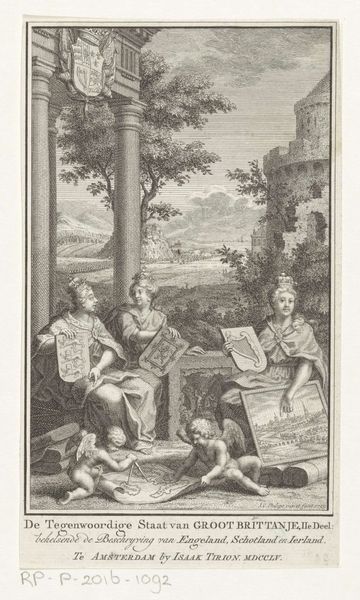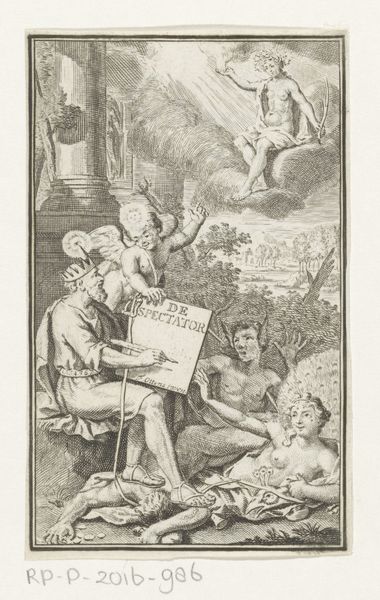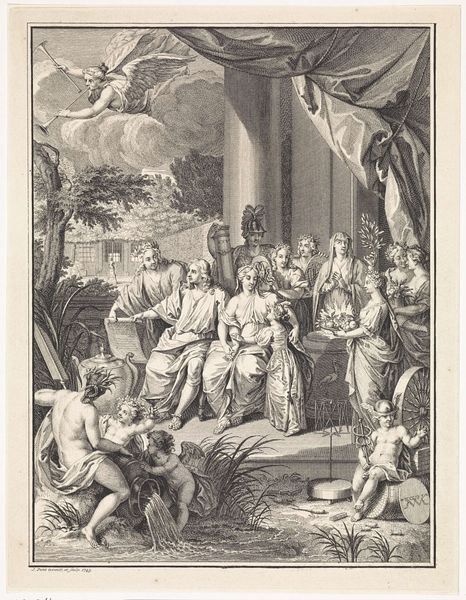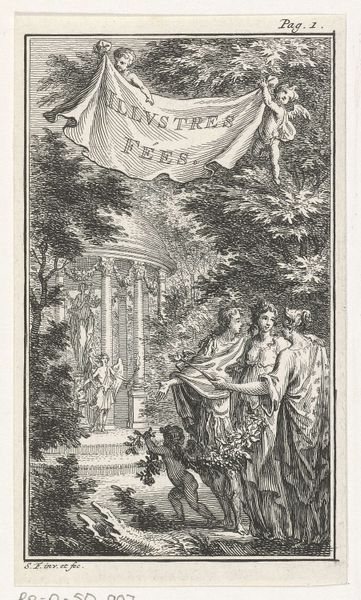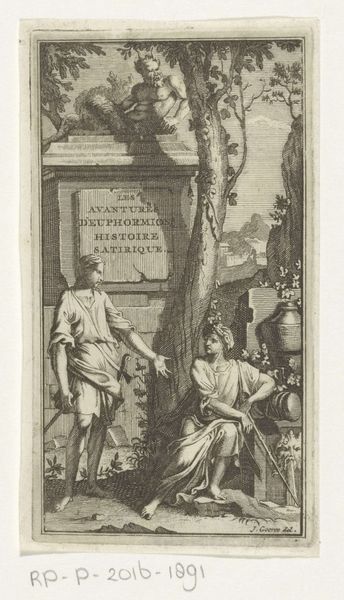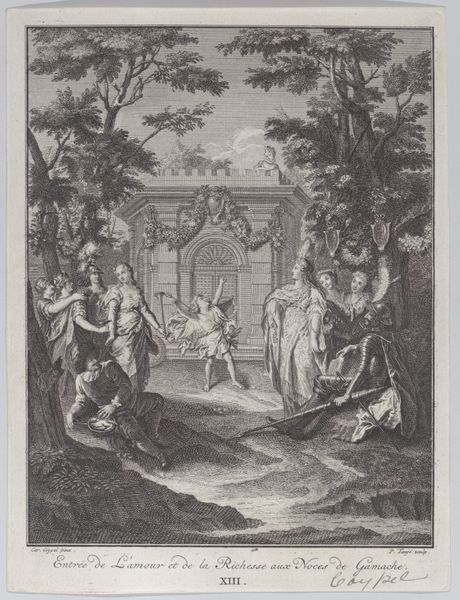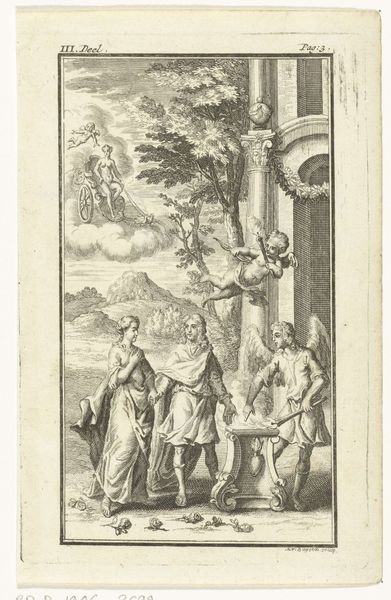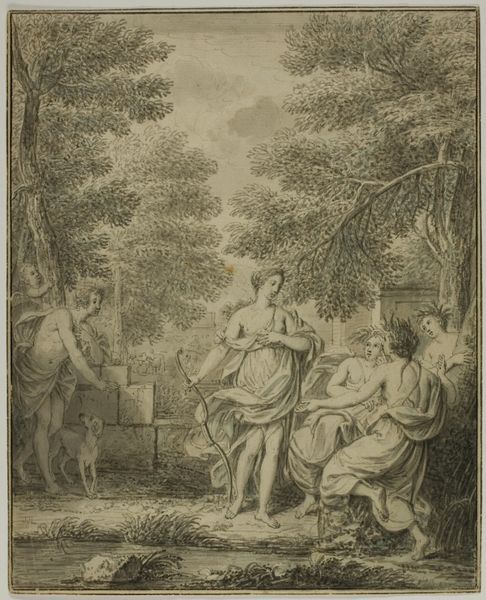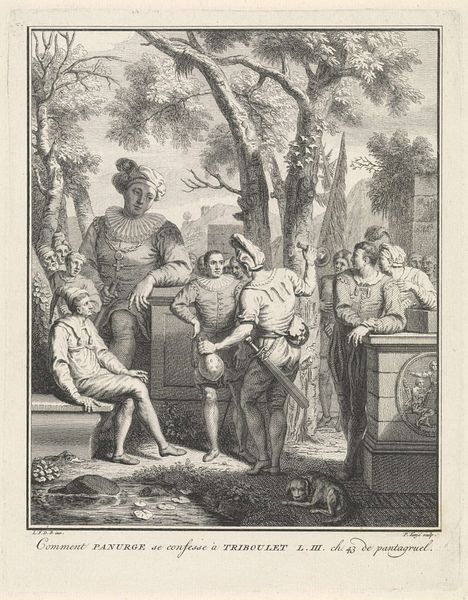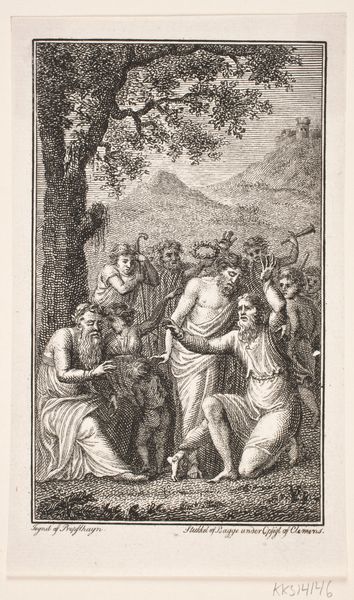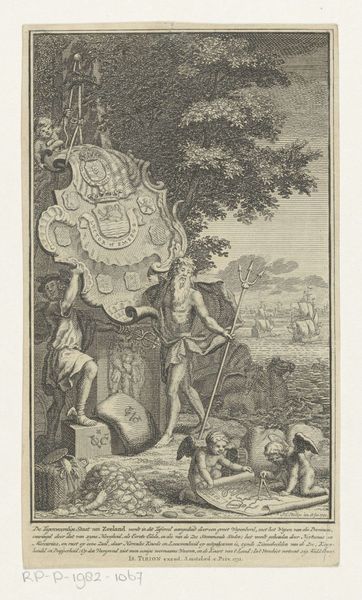
print, engraving
#
allegory
#
pen drawing
# print
#
landscape
#
history-painting
#
engraving
Dimensions: height 178 mm, width 104 mm
Copyright: Rijks Museum: Open Domain
Curator: This engraving, dating back to 1767, is entitled "Allegory of South America," and was created by Jan Caspar Philips. It offers us a glimpse into how the continent was perceived in Europe at that time. Editor: The visual texture is incredibly rich for an engraving. There is so much intricate detail. The landscape background feels almost dreamlike. The figures dominate, though—they definitely feel staged. Curator: Indeed. Allegorical prints like this were quite popular, using symbolic figures to represent concepts or regions. Here, we see indigenous figures intertwined with representations of European colonial powers. The artist is not merely creating an image; they are constructing an argument about power. Editor: I’m interested in the material process itself. The fineness of the lines, the labor involved in cutting that plate to create this image of global power relations—the artisanal craft is itself a form of…capital, in a sense. This print would have been widely circulated and reproduced, amplifying its message and establishing Philips’s reputation. Curator: Precisely. Notice the map in the center? South America is displayed as a resource to be exploited, with figures bearing the crests and names of colonizing nations. We see a subtle interplay between geography, power, and knowledge, which, when widely consumed, reinforces existing structures. It becomes almost a cartographic advertisement. Editor: It highlights a tension – the inherent value in raw materials of a “new” place vs. the skill in producing art or knowledge that comes from "old" Europe. I think the production value serves less as commentary and more as simple visual domination by Europeans through sophisticated crafting. Curator: That's a sharp observation about visual dominance. Allegories are powerful tools to create idealized notions and solidify cultural dominance and national aspiration. Editor: And understanding the mechanics and distribution of printing allows us to grasp how art contributes to societal narratives through a visual form. That interplay interests me beyond what the image explicitly portrays. Curator: Analyzing these pieces through social and political lenses makes these images relevant and gives a new and informative point of view of European social life. Editor: Yes, that's the true allure; how can a material item embody an entire period of the time.
Comments
No comments
Be the first to comment and join the conversation on the ultimate creative platform.
